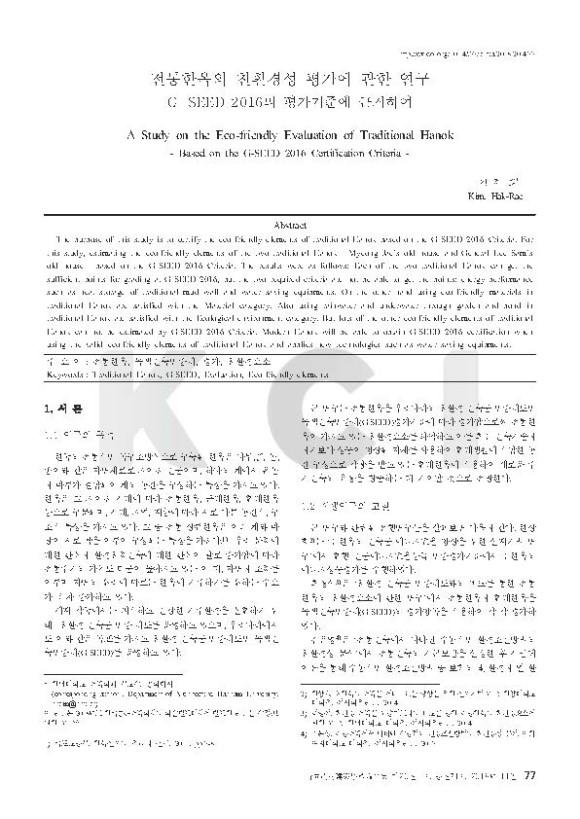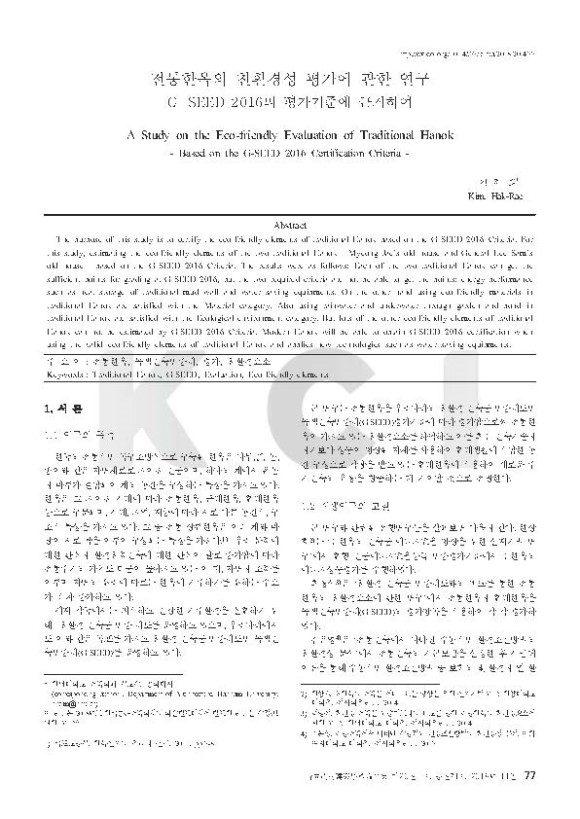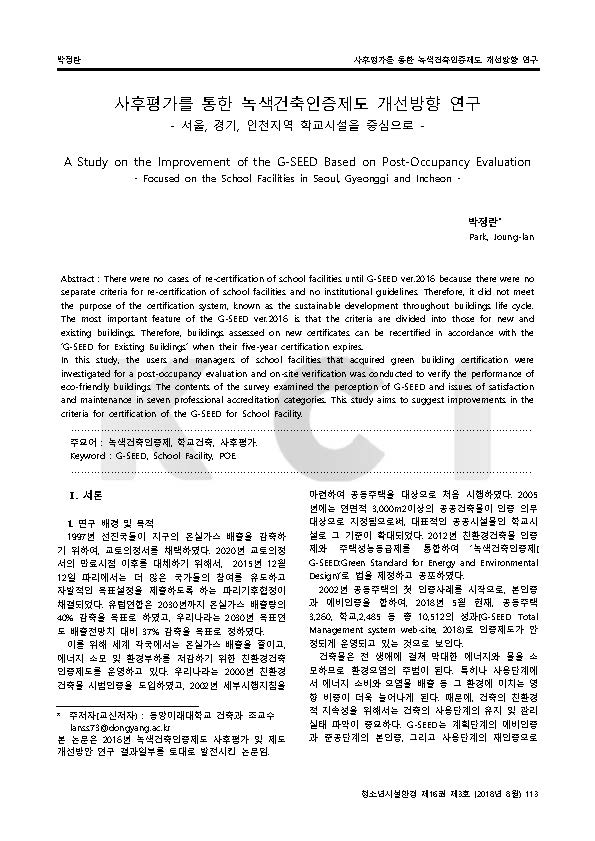방송사건물에 적용된 녹색건축인증평가요소 분석에 관한 연구

방송사건물에 적용된 녹색건축인증평가요소 분석에 관한 연구 A Study on the G-SEED Certification Evaluation Elements Analysis for the Application of Broadcasting Station Buildin g 저자 김배영, 박현수 /Hyeonsoo Park, 윤혜경 소속 홍익대 대학원 박사과정, 건국대학교, 홍익대학교 학술지정보 대한건축학회논문집(계획계) 발행정보 대한건축학회 2015년 피인용횟수0자료제공처한국연구재단 주제분야 공학 > 건축공학 <초록> This study scrutinizes the basic data on various eco-friendly factors through the cases of environment-friendly certified broadcasting station buildings. These data are expected to be helpful for the green building certification of broadcasting station buildings which are to be newly built. Three steps for the analysis were used. Firstly, they were examined the layout plans by the sun shadow and wind direction for an external environment control field, planting with environmentally purified water and land biotope, and ecological forestation by the water space plan. Secondly, they were tested the items for the building form plans with environmental loads...




